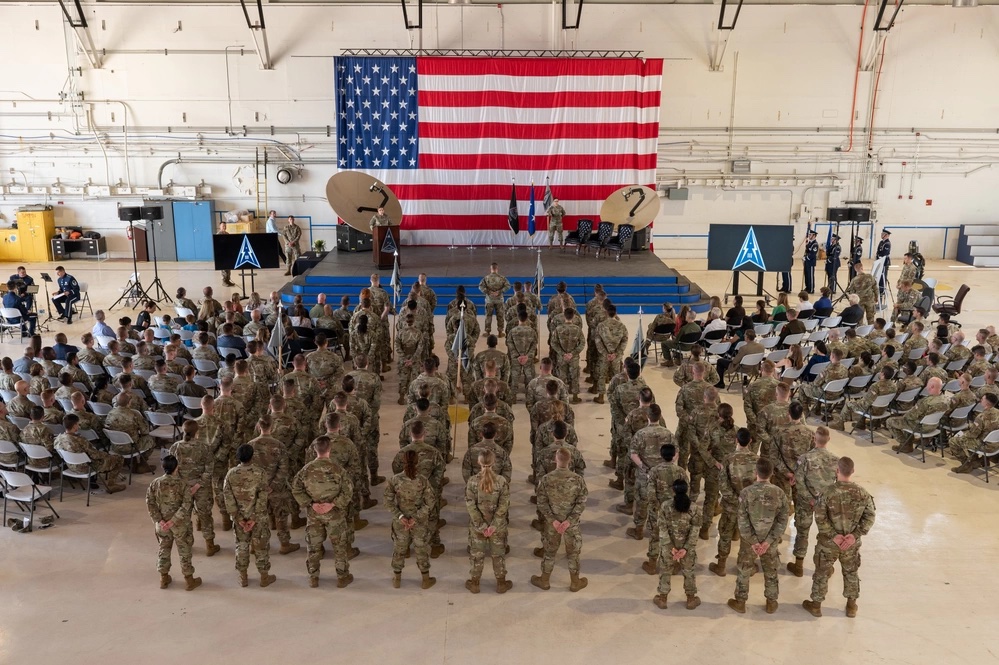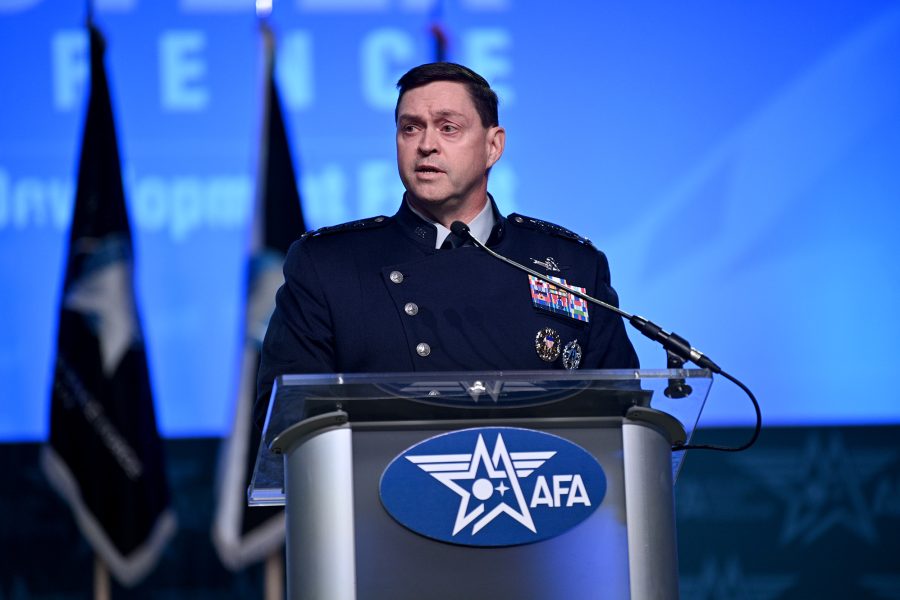The Space Force is launching two prototype “Integrated Mission Deltas,” a new type of unit meant to bridge the gaps among operations, engineering, and capability development specialists, hoping to deliver maintenance and upgrades to important systems much faster than before.
“In my mind, performance should be optimized around our missions rather than the functions that support them,” said Chief of Space Operations Gen. B. Chance Saltzman in his keynote address at AFA’s Air, Space, and Cyber Conference on Sept. 12. “In other words, we cannot afford to split a mission area’s critical activities across organizational seams.”
Today, operators in the space, cyber, and intelligence fields fall under Space Operations Command (SpOC), while engineers and program managers fall under Space Systems Command (SSC). That separation can slow the rate at which operators provide feedback to developers and vice versa in order to maintain and improve systems.
“[I]t is essential that all elements of readiness—the people, the training, the equipment, and the sustainment—fall into the same organizational structure and that we create unity of command around those elements at the lowest possible level,” Saltzman said.
With the integrated mission delta, those career fields are brought together under a colonel-level composite command team where the commander will represent operations and the deputy commander will represent sustainment, or vice versa.
“The goal there is you have in your command team all the expertise you need to generate those ready forces,” an anonymous Space Force official told Air & Space Forces Magazine.

The two integrated mission deltas will cover electronic warfare (EW) and position, navigation, and timing (PNT). The EW integrated mission delta will not be a new unit. Instead, the EW sustainment offices that currently reside in SSC will be realigned to Space Delta 3, the current operational EW Space Delta overseen by SpOC.
The PNT integrated mission delta will be different. Those operators currently share Space Delta 8 with satellite communications operators, but under the new system, PNT operators will have their own delta, a new delta number, and will work alongside PNT sustainers. A Space Force spokesperson emphasized that no relocations or mission changes will occur as a result of the new layout.
“This concept will be thoroughly evaluated and refined before it is considered for implementation across the force,” Maj. Tanya Downsworth told Air & Space Forces Magazine. “This initial effort will not involve the physical relocation of personnel and it will not change the core missions of SpOC or SSC; they will remain responsible for balancing Space Force activities and investments across mission sets, including those led by prototype IMDs.”
The model the integration mission deltas are based on had great success in the launch arena under SSC, where operators and developers expanded the launch windows for new systems.
“Instead of having a three-hour hold for weather, you would have only a one-hour hold for weather, under the safety guidelines, because the operators are able to work with the people who own the tool and get it upgraded to account for operational needs,” the anonymous official said.
The integrated mission deltas are part of Air Force Secretary Frank Kendall’s push to reoptimize the Department for an era of great power competition.
“Both of these deltas integrate operations and sustainment, creating unity of command for all aspects of readiness and enhance our abilities to continue to provide world-class space effects in the face of a determined adversary,” Saltzman said.
There may be administrative challenges ahead. One challenge is that maintenance and acquisition sometimes bleed together in the space domain. The anonymous official stressed that the integrated mission deltas will not touch acquisition, which falls under SSC.
“There are people who do GPS maintenance activities 60 percent of the time, and the other 40 percent of the time they’re working on the next generation of GPS satellites,” he said. “That’s probably the biggest thing that we have to learn: ‘how do we divide the maintenance activities that are done in SSC from the capability, development, acquisition, and next-gen programs.’”
Another possible hurdle is the fact that integrated mission deltas are a fundamentally different model in a military organized by career fields. Though the new model could enhance readiness and increase the command opportunities for Guardians who are not space operators, it could also have growing pains.
“There are no perfect organizational structures,” Saltzman said. “The structuring of people to do their jobs will always create seams. The key is to arrange the organization to maximize performance around what matters most and minimize the negative integration effects that seams naturally create.”
The integrated mission deltas make up ‘Force Generation,’ one of four steps the Space Force is taking to prepare for great power competition. The other three are:
- Force Design: Designing the service to be prepared for threats, such as by better integrating commercial space capabilities, fueled by a pending study from the Space Warfighter Analysis Center on architectures needed for success.
- Force Development: Investing in exercises, war games, training, and education, such as through the Intermediate and Senior Level Education program hosted by Johns Hopkins University, to foster critical thinking in the service.
- Force Employment: Normalizing how the Space Force presents forces by standing up service components to the regional combatant commands. Such components already exist in the Indo-Pacific, Korea, and Central Commands, with new ones coming to Europe and Africa.
